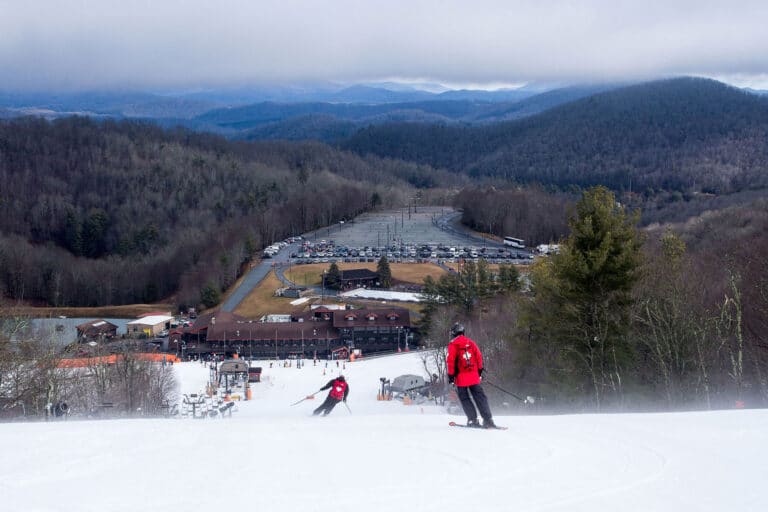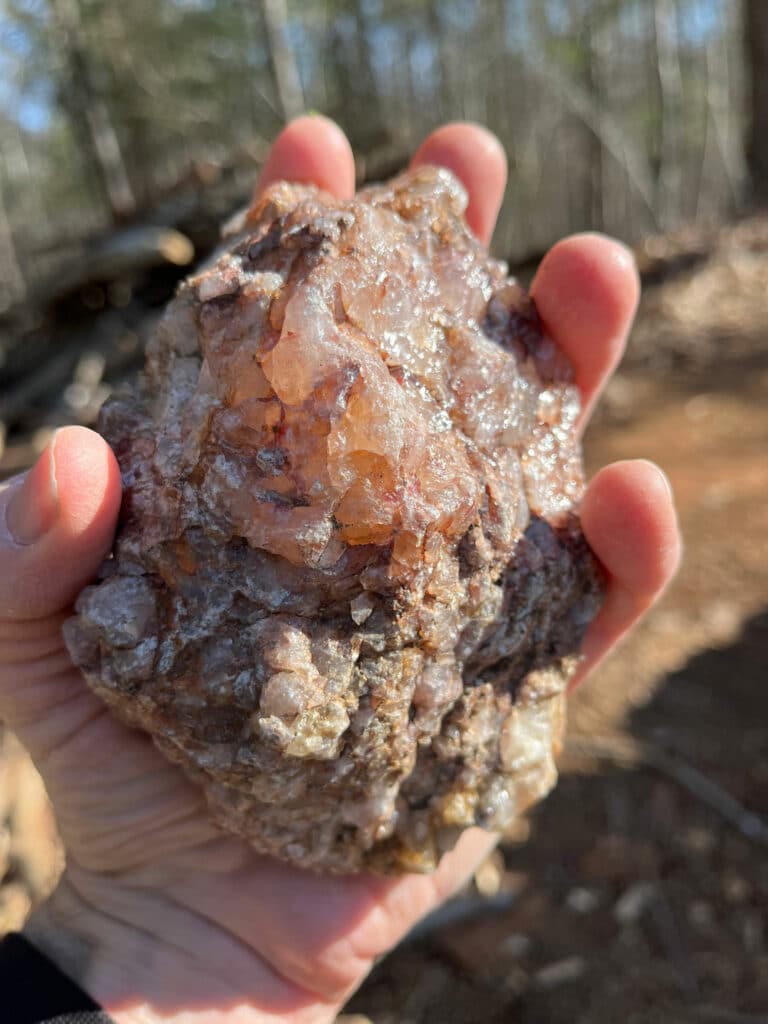Weather Underground
Nature gets a lot of love, but rocks—not so much. We celebrate forests and rivers, but we rarely notice the underlying rocks and soil that create them.
Geologist Philip Prince sees what lies beneath. He has been viewing the landscape through a geologic lens ever since a college field trip to South Carolina’s Jones Gap State Park. He had been there often to hike and explore, but on this visit with a geology professor, he saw for the first time the underlying soil and rocks that shaped the landscape. “It was exciting to see a familiar place in a new way,” says Prince.
For more than a decade, Prince has been helping others see underlying geologic processes that “expand the truth of a place.” A favorite mountain, river, or trail has a story in deep time that few unearth, explains Prince. “Understanding the full story of these mountains deepens our relationships with them.”
Prince’s insights have been especially valuable in the aftermath of Hurricane Helene. Prince’s YouTube channel, the GeoModels, explains for everyday folks how and why rivers flooded. A half-million people have tuned in to watch.
Prince is also a world-class whitewater paddler who has competed in the Green Race for four years. Knowing how water moves over rock has helped him find the best lines and identify first descents in remote Appalachian headwaters.
Recently BRO talked to Prince about how geology shaped Helene, how the earth talks to the sky, and how his knowledge of rocks helps him paddle class V rivers.
BRO: What made Helene’s impacts so severe in Southern Appalachia?
PP: The Blue Ridge Escarpment was a big part of it. The Escarpment is essentially a steep, 5,000-foot wall rising out of the landscape. When Helene came up from the Gulf, the Escarpment forced all that moist air upward, where the air expanded and cooled, making even more rain come out of it. The shape of the land maximized the rain.
Several of the highest mountain ranges in the East are also clustered in this region. The high, steep topography produced and captured even more rain.
At the most basic level, hurricanes are the movement of thermal energy. And there is more thermal energy in the system now than ever in recorded history. Oceans are warmer, and the weather is warmer every year. Will the consequence be more events like this?
BRO: At least 2,000 landslides have been reported post-Helene. Was the number of landslides unusual?
PP: Landslides have been happening here for a long time, and they will continue happening. Rock and soil build up, and landslides relieve the pressure of the accumulated material. The landslides and floods were doing what landscapes are supposed to do. Mountains and rivers will continue being themselves.
BRO: Are there places today where you can see evidence of past landslides?
PP: Landslides have been occurring across our region for a long time, and they will continue to occur. Even before Helene, the Southern Appalachian landscape is absolutely covered with landslides of all shapes and sizes. Some are absolutely enormous. They are bigger than anything associated with Helene.
Most landslides have been covered up by tree growth and recolonized by forests. A debris flow in November 1977 is still visible along the Blue Ridge Parkway from Highway 80 in McDowell County. Looking toward the Black Mountain range, chutes are still visible coming down the steep slopes.
Landslides are everywhere. There is a landslide in Bent Creek behind the Arboretum in Asheville, just across from the French Broad River. A debris flow in 1916 occurred just behind the Pisgah ranger station near the Davidson River.
Bat Cave itself is actually a giant rock slide. It is the result of a mountain movement that opened up a fracture in the rock at such a large scale that it is like a cave.
BRO: Are there smarter ways to live within our geology and geography?
PP: Floods and slides have shaped Southern Appalachia for a long time. Parts of the world have far more landslides and floods, but they are also typically more prepared for them. In Southern Appalachia, where we periodically have catastrophic floods and landslides, we have to find a balance between safety and going about life as we know it.
At the very least, we need to consider where we rebuild. Some landslide hazards can be avoided by locating new building projects appropriately. Maintaining good drainage by clearing ditches and culverts is important.
Old logging roads are often vulnerable to landslides, especially if they lack good drainage and maintenance. With Helene, a lot of debris flows started on road embankments, where they overwhelmed ditches and culverts and washed out roads.
Tree cover absolutely slows rain infiltration, and evapotranspiration takes moisture out of soil.
Landslide and debris flows are more rampant on slopes that have been recently cut compared to slopes with mature forests.
BRO: Does the lens of geology change the way you see the world?
PP: I see it as if I were floating above it in Google Earth. I see the world through its geologic functions. When I visit a waterfall, others think, “Hey this is a cool waterfall.” I am thinking about where the waterfall sits in its drainage network and how it relates to headwaters above it. I see waterfalls and rapids as moving boundaries of geologic change.
BRO: Does geology help you as a paddler?
PP: I guess it helps me find lines or identify first descents in remote headwaters. I pay attention to the landscape of where I am paddling. Paddling in the Blue Ridge is different from paddling in West Virginia, mainly because of geology. There is more metamorphic rock in the Blue Ridge with more tilted profiles, while West Virginia has more flat-lying sandstone. There are fewer drops and more boulders in West Virginia.
After Helene, many Blue Ridge rivers are significantly different. How long will it take for them to return, or is this a new look for these rivers? No one really knows.
Cover photo: Damage caused by hurricane helene in the Barnardsville area of north carolina. Photo courtesy of the author







